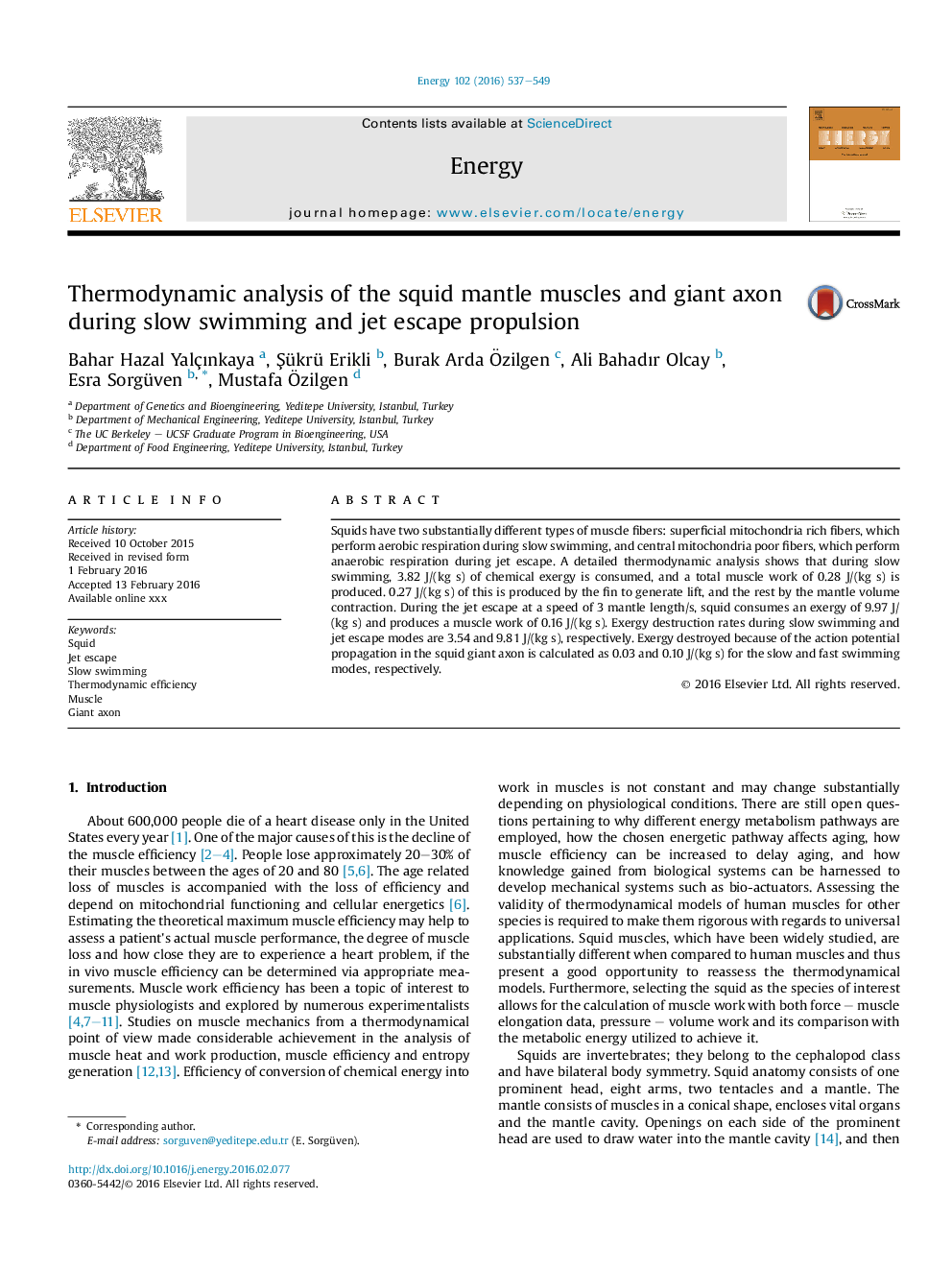| Article ID | Journal | Published Year | Pages | File Type |
|---|---|---|---|---|
| 8074073 | Energy | 2016 | 13 Pages |
Abstract
Squids have two substantially different types of muscle fibers: superficial mitochondria rich fibers, which perform aerobic respiration during slow swimming, and central mitochondria poor fibers, which perform anaerobic respiration during jet escape. A detailed thermodynamic analysis shows that during slow swimming, 3.82 J/(kg s) of chemical exergy is consumed, and a total muscle work of 0.28 J/(kg s) is produced. 0.27 J/(kg s) of this is produced by the fin to generate lift, and the rest by the mantle volume contraction. During the jet escape at a speed of 3 mantle length/s, squid consumes an exergy of 9.97 J/(kg s) and produces a muscle work of 0.16 J/(kg s). Exergy destruction rates during slow swimming and jet escape modes are 3.54 and 9.81 J/(kg s), respectively. Exergy destroyed because of the action potential propagation in the squid giant axon is calculated as 0.03 and 0.10 J/(kg s) for the slow and fast swimming modes, respectively.
Related Topics
Physical Sciences and Engineering
Energy
Energy (General)
Authors
Bahar Hazal Yalçınkaya, Åükrü Erikli, Burak Arda Ãzilgen, Ali Bahadır Olcay, Esra Sorgüven, Mustafa Ãzilgen,
